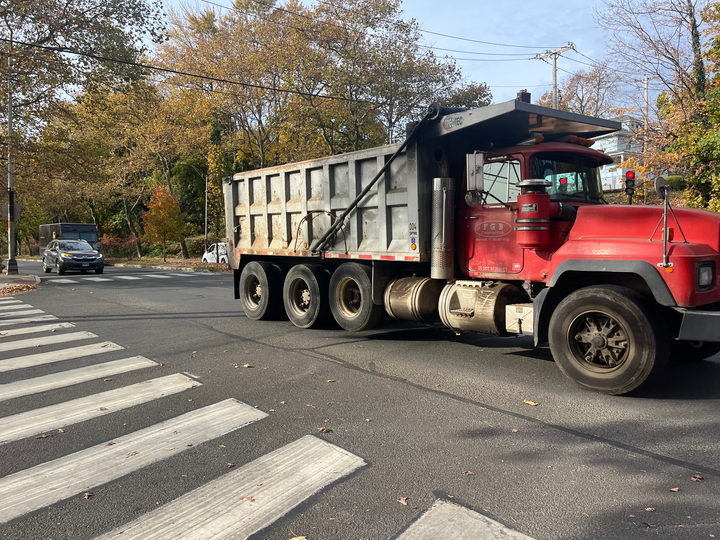Report: Air Quality Continues to be a Challenge in Fairfield County
Connecticut—and in particular Fairfield County—suffers from some of the worst air quality in the country, according to state officials.

Fairfield County has the worst air quality in the NYC metro area, as residents experienced more than 20 unhealthy air quality days from 2021 to 2023, according to a new report.
The 2025 “State of the Air” report from the American Lung Association grades exposure to unhealthy levels of ozone air pollution—also known as smog—and exposure to particle pollution—also known as soot. Across the country, the report found that “156 million people (46%) are living in areas that had unhealthy levels of air pollution.”
“Unfortunately, too many people in Connecticut are living with unhealthy levels of both ozone and particle pollution,” Ruth Canovi, director of advocacy for Connecticut for the American Lung Association, said in a statement. “This air pollution is causing kids to have asthma attacks, making people who work outdoors sick and unable to work, and leading to low birth weight in babies.”
Officials from Connecticut’s Department of Energy & Environmental Protection noted that the state “suffers from some of the worst air quality in the United States.” In 2024, the state had 23 days that exceeded the federal level for ozone pollution. Officials noted that air pollution is often linked to respiratory illnesses like asthma.
“High levels of air pollution impact the health of everyone, but sensitive people, including children, the elderly, and those with respiratory disease are at greater risk,” said DEEP Commissioner Katie Dykes in a statement.
In 2023, officials said the state “incurred nearly $120 million in acute care charges due to asthma as a primary diagnosis.”
"Air pollution impacts public health through respiratory issues, an increased risk of heart disease and potentially increasing the risk of cancer, " said DPH Commissioner Manisha Juthani, M.D. in a statement.
Local Action
Here at Coastal Connecticut Times, we previously reported that the area had some of the worst air pollution in the country due to a variety of factors, including traffic emissions from I-95 and the Merritt Parkway, leftover contamination from historic industrial uses, and weather patterns which concentrate pollution in the area.
Communities across the area have been taking steps to better monitor the air quality in their municipality to let residents know when pollutant levels might be higher, while others are looking at ways to mitigate the causes of air pollution.
For example, in Stamford, thanks in large part to the advocacy of Representative Virgil De La Cruz, the city is participating in a state air monitoring effort, where devices are installed “throughout the city based on the State Department of Public Health’s map of areas with high asthma rates,” according to DEEP. The data is available on the city’s website, allowing residents to gain real-time information about the air quality.
In addition, the city also accepted a $68,000 grant from the federal Environmental Protection Agency in 2024 for a 31-month air quality monitoring program that will install three monitors in the South End and West Side neighborhoods with a focus on tracking NO2, particulate matter, and ozone levels.
The American Lung Association and other environmental advocacy groups in Connecticut, like Save the Sound, are calling on the state legislature to “take action to improve our air quality,” by supporting bills like HB5004.
HB5004, which passed the House earlier this month, calls on the state to reduce greenhouse gas emissions to 45% of their 2001 levels by 2030, to 70% of their 2016 levels by 2040, and to “net-zero” emissions by 2050. In addition, according to the Connecticut Mirror, the bill would “create a new ‘Clean Economy Council’ to develop strategies and policies to help meet those targets. In addition, it offers a variety of incentives and programs for solar canopies, energy-efficient heating and cooling systems, heat pumps, green jobs and sustainability-focused businesses.”
The air pollutants covered in this report are widespread and can impact anyone’s health. Both ozone and particle pollution can cause premature death and other serious health effects such as asthma attacks, heart attacks and strokes, preterm births and impaired cognitive functioning later in life. Particle pollution can also cause lung cancer,” Canovi said in a statement. “We urge Connecticut policymakers to take action to improve our air quality. These policies will help Connecticut reduce pollution, enhance renewable energy and improve our access to healthy air.”
Read more: Trouble in the Air: Southwest Connecticut Deals with Poor Air Quality



